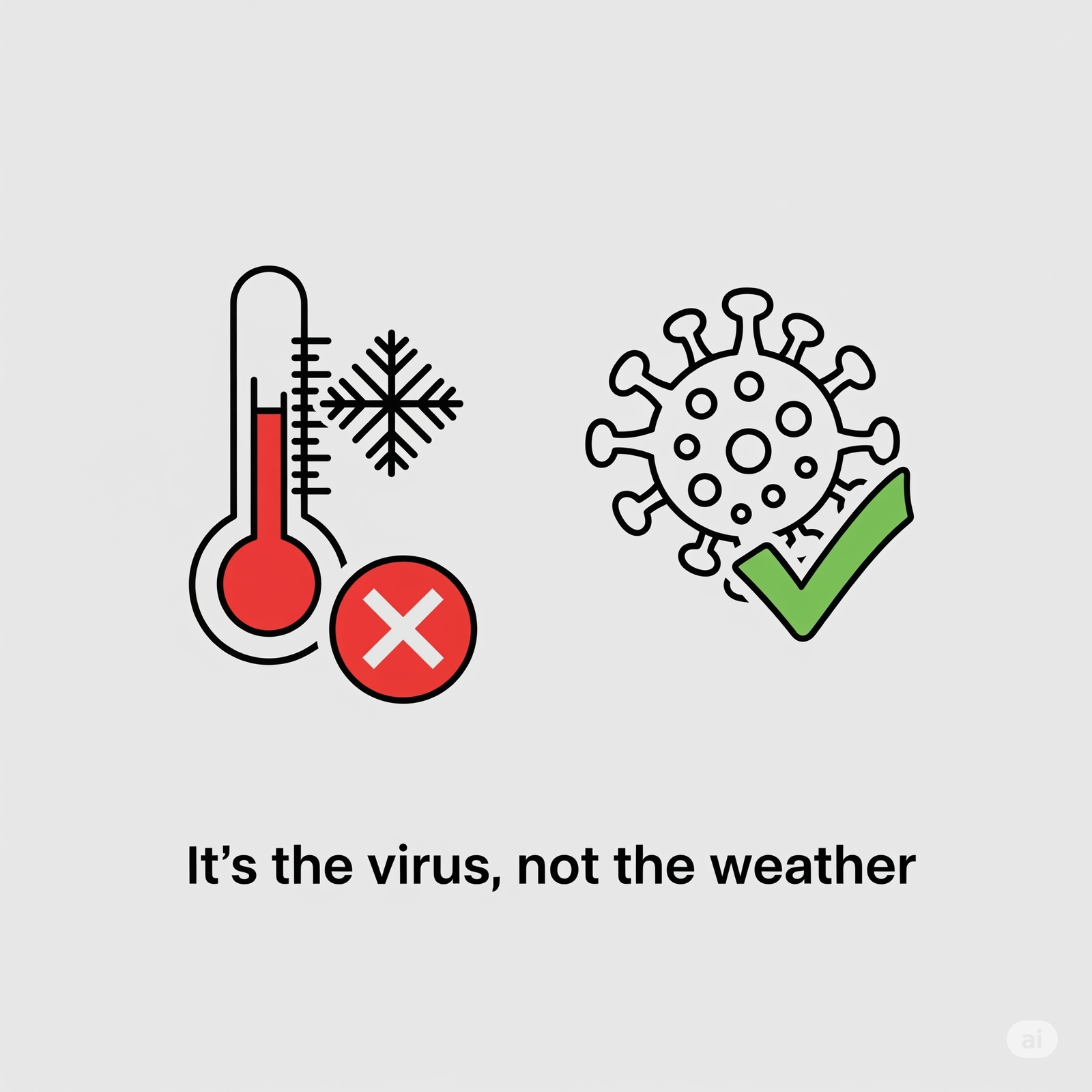Physical Address
304 North Cardinal St.
Dorchester Center, MA 02124
Physical Address
304 North Cardinal St.
Dorchester Center, MA 02124

(Key Takeaways)
The advice is as old as winter itself: “Bundle up, or you’ll catch a cold!” It’s a line we’ve all heard, a piece of conventional wisdom that feels true. After all, colds and flu spike when the temperature drops. But what if we’ve been looking at this connection all wrong?
The truth is, cold air doesn’t create viruses. And a chilly walk home won’t magically make you sick. The relationship between winter and illness is more complex and far more interesting than the old myth suggests. The subtle detail that changes the entire equation isn’t the temperature outside, but what’s happening inside your nose.
Let’s get the most important fact out of the way first: you get a cold or the flu from a virus, period. Rhinoviruses, influenza viruses, and other respiratory germs are the true culprits. You catch them when you inhale droplets from an infected person’s cough or sneeze, or when you touch a contaminated surface and then touch your face.
Without exposure to one of these viruses, you could stand in the cold all day and never get sick. A landmark study cited by the National Institutes of Health confirmed this years ago by exposing volunteers to cold temperatures. The chilled volunteers were no more likely to get sick than those who stayed warm.
So, if the cold isn’t the cause, why does everyone seem to get sick in winter? The answer has two parts.
Cold weather is less of a cause and more of an accomplice. It creates the perfect environment for viruses to thrive and spread for a few key reasons.
For years, we thought the story ended there. But recent research has revealed a surprising counter-narrative, and it’s happening right at the front line of infection: your nose.
A 2022 study published in The Journal of Allergy and Clinical Immunology uncovered a fascinating biological mechanism. Scientists at Mass Eye and Ear discovered that the cells in the front of your nose have a remarkable ability to fight off viruses. When they detect an intruder, they release swarms of tiny sacs called extracellular vesicles (EVs) that swarm and neutralize the virus before it can infect you.
But the data revealed a crucial weakness: this defense system is impaired by the cold.
When you breathe in cold air, the temperature inside the tip of your nose can drop by as much as 9°F (5°C). The study found that this modest drop in temperature cuts the number of virus-fighting EVs released by more than 40% and makes them less effective at fighting off the virus.
To distill it down to its core: cold air weakens the specific immune defenses in your nose, which is the main entry point for respiratory viruses. This gives germs a much better chance of gaining a foothold and making you sick.
[Video: An embedded, high-quality video from a reputable source like PBS NewsHour or a major health organization explaining the link between cold air and the nasal immune response.]
The ultimate takeaway is this: you don’t need to fear the cold, but you do need to be smart about germs. Let my trial and error be your shortcut here; focusing on these habits will do more than any heavy coat.
The conversation doesn’t end here. The core principle to carry forward is that our bodies are incredibly smart, but they respond to their environment. Understanding how they respond helps us move past old myths and take actions that truly matter.